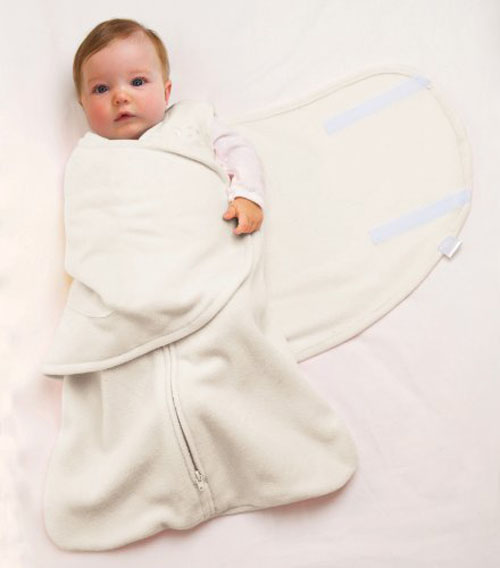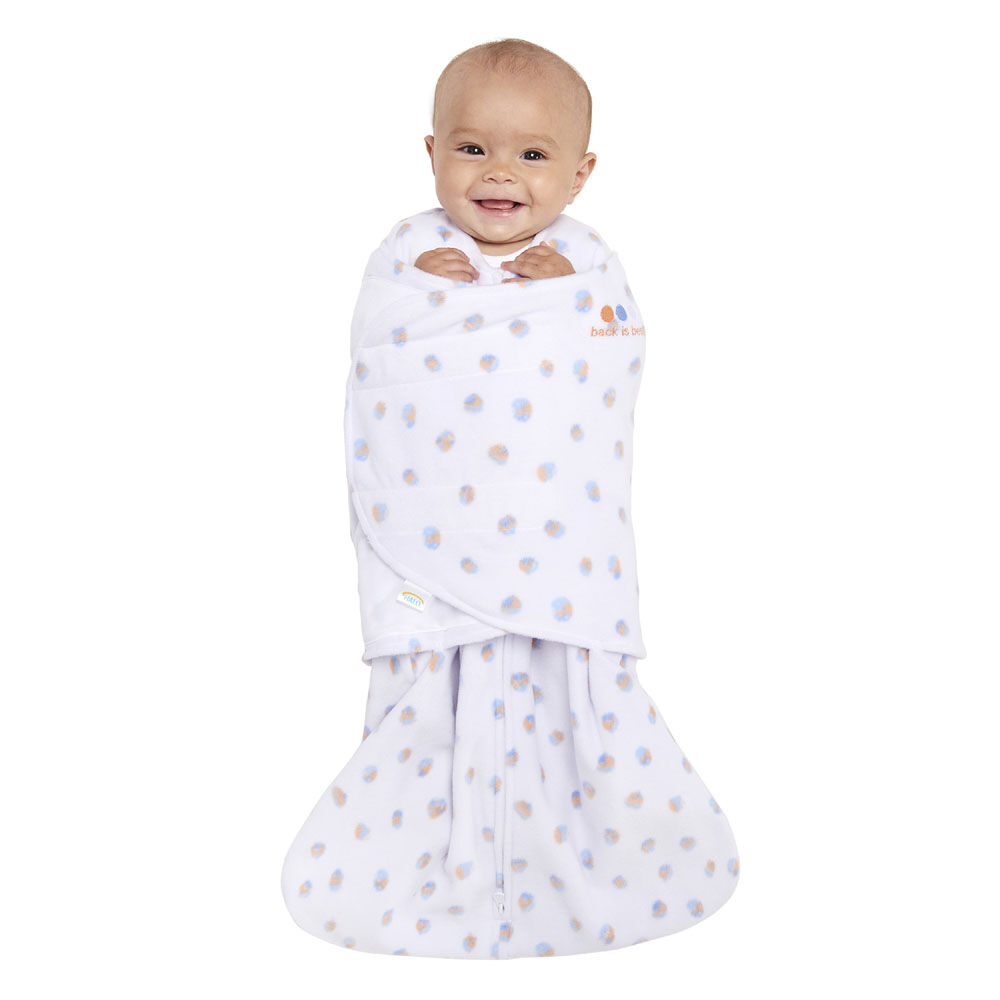


Weighted sleep sacks: Some sleep sacks, suits, swaddles and blankets offer additional weight, but the AAP says these are not safe and therefore shouldn't be used.(Some models mimic swaddling by giving baby covered sleeves to hold her arms instead.) Like a traditional swaddle, these are not safe to be used once baby can roll herself over - usually around 4 months - unless the design of the bag can convert to keep her arms free. Your baby is enclosed in a cozy bag, and then extra fabric flaps are secured around her arms to swaddle her.

Swaddle-style sleep sacks: These wearable blankets combine the best of a sleep bag with the best of a swaddle.This style can typically be used safely for babies long after they’re able to roll over because her arms are free. They usually have a zipper to help you get baby in and out the best ones use an inverted zipper for easier diaper changes. Sleeveless sleep sacks: These are designed for baby to have her arms out while sleeping, while keeping the rest of her body contained in a closed sack.But there are a few main categories of sleep sacks to choose from: There are now dozens of brands that make wearable blankets, using lots of different styles, fabrics and designs. And no matter which sleep sack you buy, make sure to follow the manufacturer’s sizing recommendations and usage instructions, as incorrect usage has been associated with injuries. Always have baby sleep on her back and never put anything in her crib (even pillows) until she’s at least 12 months old. While the AAP says wearable blankets are preferable to traditional blankets for keeping baby cozy at night, it’s still critical for parents to practice safe sleep hygiene with their babies. Some sleep sack products are marketed toward preventing Sudden Infant Death Syndrome (SIDS) because they help mitigate some of the risk factors associated with SIDS, such as overheating and blanket tangling. “Since traditional blankets are deemed unsafe for children under 1, swaddling or sleep sacks are a great alternative.” “Babies like to feel comfort and security while they’re sleeping,” says Miami-based pediatrician Gary Kramer, MD. The idea of a sleep sack is the same as swaddling: to provide security, comfort and a snug feeling for little ones to help them rest easy on their own. (The product was inspired by European sleeping bags for babies, which have been used for decades.) Today, the term has become synonymous with wearable blankets. company to popularize “sleep sacks” when it debuted a product in the early 2000s intended to help babies snooze and also reduce the risk of getting tangled up in clothing or loose bedding during the night. The sleep company Halo was the first U.S. While our ancestors may have wrapped their little ones in thin cloth, today's marketplace is filled with products that do much of the swaddling work for you. When done correctly, the American Academy of Pediatrics (AAP) says that swaddling can help calm infants and promote sleep. Swaddling is an age-old technique for wrapping babies in a blanket in order to replicate the feeling of being in the womb.


 0 kommentar(er)
0 kommentar(er)
